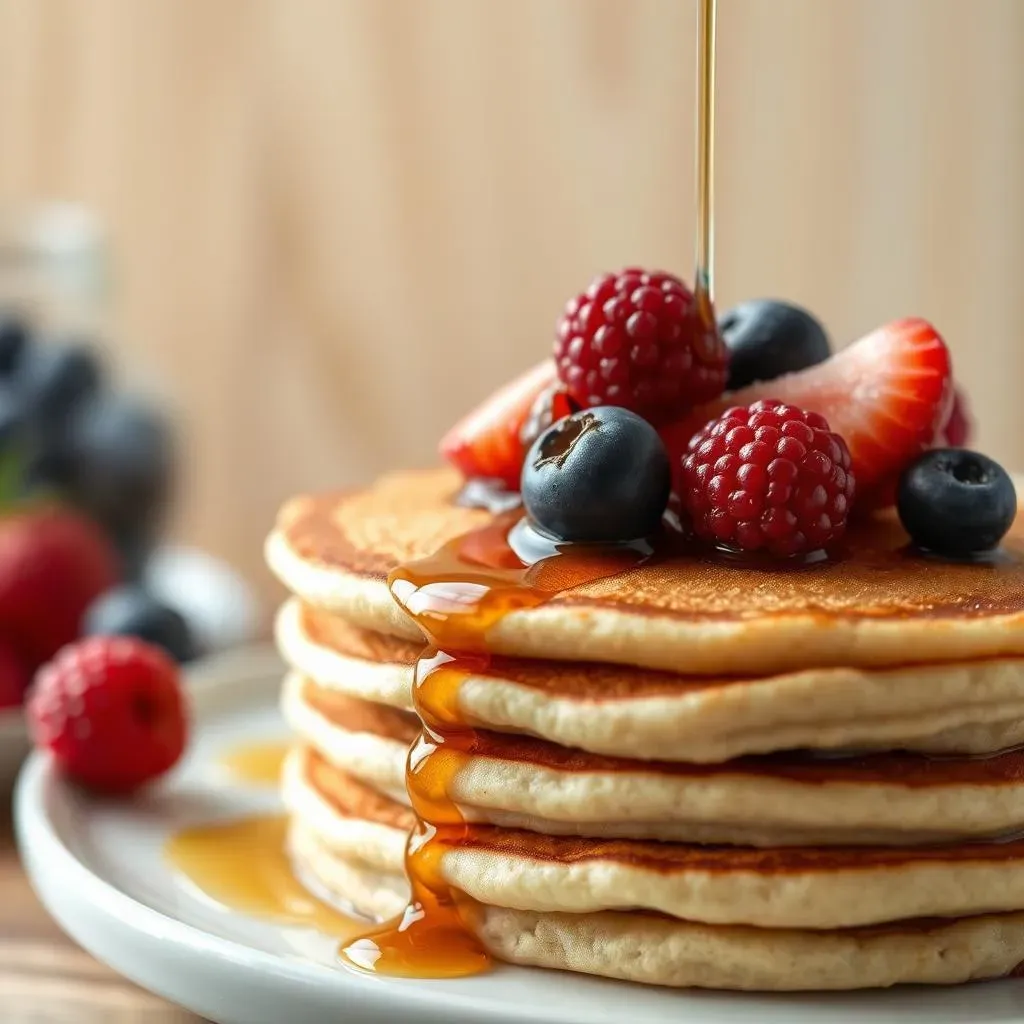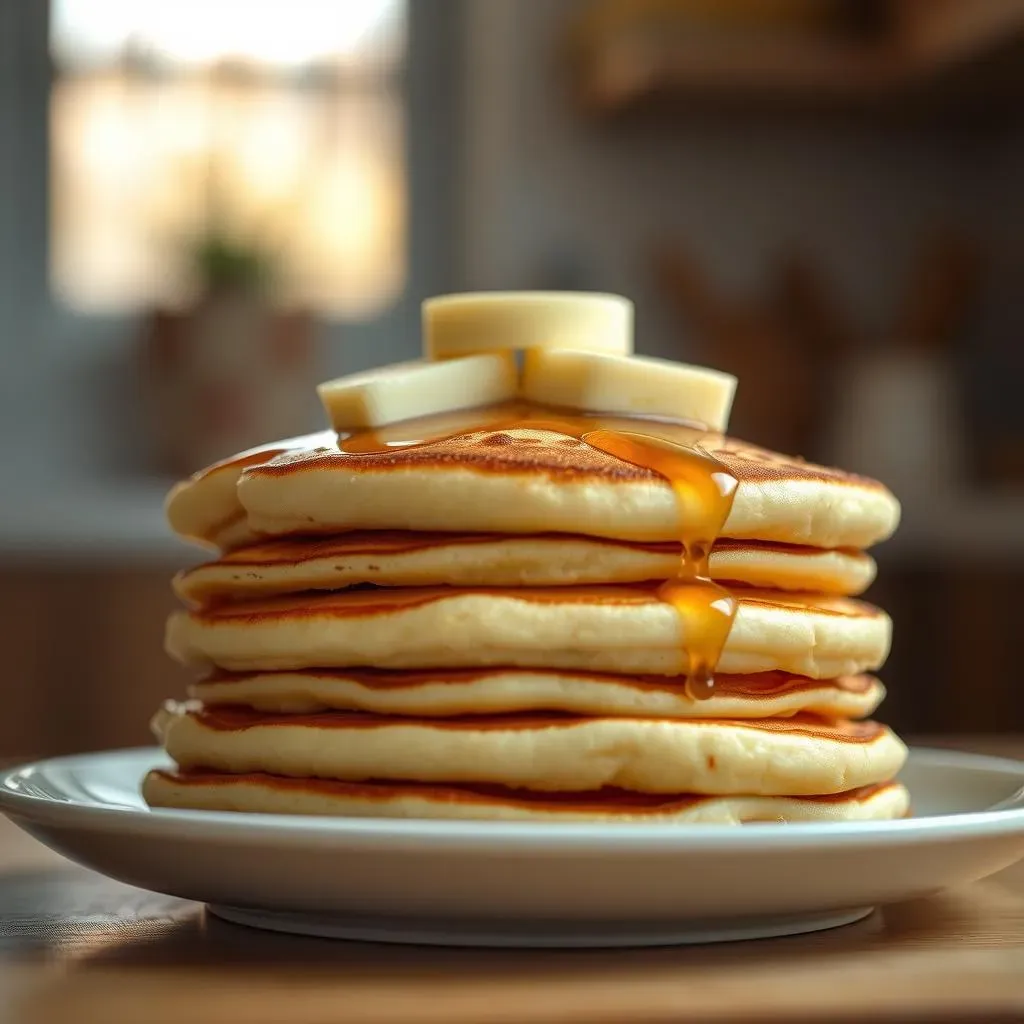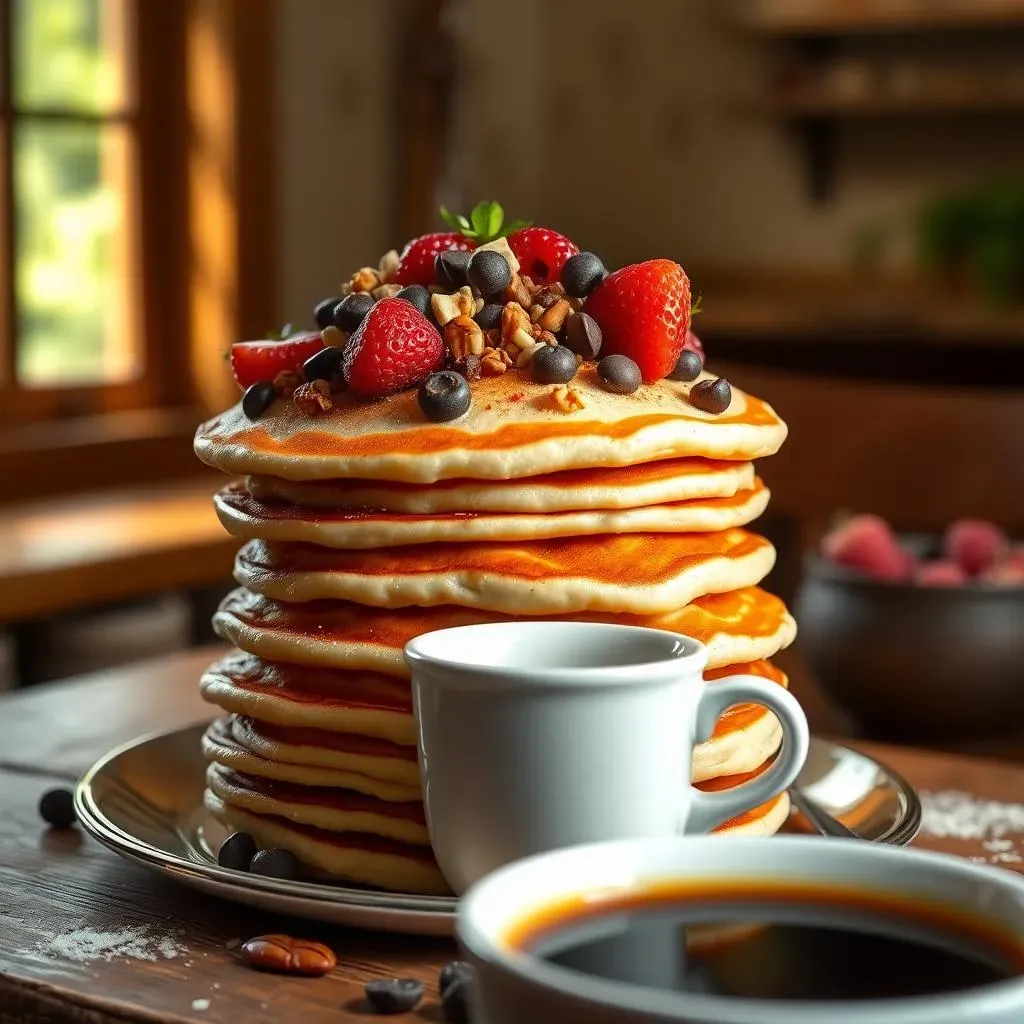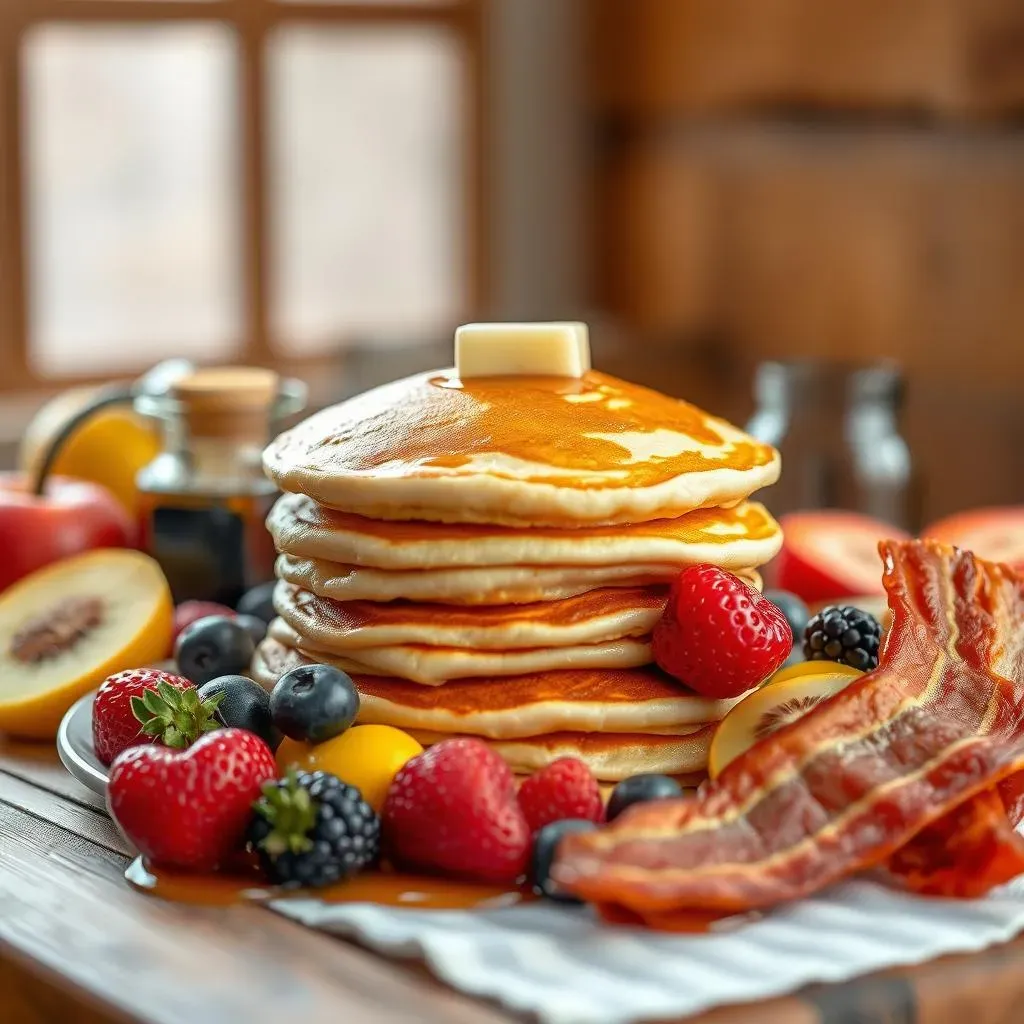Table of Contents
Mornings can be chaotic, especially when you're trying to juggle work, family, and the endless quest for a decent breakfast. If you're like me, you've probably had those days where the thought of cooking anything feels like climbing a mountain. But what if I told you that you could have warm, fluffy, and delicious pancakes without the gluten and without spending half your morning in the kitchen? That’s right, a quick and easy gluten-free pancake recipe for a quick breakfast is totally achievable. This isn't your average, dry, crumbly gluten-free fare. We're talking about pancakes that are so good, they'll make you forget they're even gluten-free. In this article, we’ll explore the secrets to mastering this breakfast staple, from understanding the basics of gluten-free baking to mastering the essential steps for creating the fluffiest pancakes. We'll also look at some tips, tricks, and variations to keep your morning routine exciting. So, grab your mixing bowl, and let's get started on the journey to quick, delicious, gluten-free pancakes!
Understanding GlutenFree Baking
Understanding GlutenFree Baking
The Gluten Factor
So, what's the big deal with gluten anyway? It's a protein found in wheat, barley, and rye, and it's what gives baked goods their elasticity and that satisfying chewiness. Think of it like the glue that holds everything together. When we remove gluten, we're also removing that essential binding element, which is why gluten-free baking can sometimes feel like a whole different ball game. It's not just about swapping out regular flour for a gluten-free version, it's also about understanding how to recreate that structure and texture. It's like trying to build a Lego castle without the special connector pieces—you need to get creative!
Gluten-free baking isn't just for those with celiac disease or gluten sensitivities. Many people are exploring it for various reasons, and it's becoming increasingly popular. It's a fun challenge, and the results can be incredibly rewarding. It can be tricky, but with the right knowledge and some practice, you can achieve amazing results. If you are new to this, you might want to check out this easy gluten free pancake recipe for beginners.
The Role of Gluten-Free Flours
Now, let's talk about gluten-free flours. There's a whole world beyond just regular wheat flour, and each gluten-free flour brings something unique to the table. Almond flour, for example, adds a lovely nutty flavor and creates a tender crumb, while rice flour can give your baked goods a light and airy texture. Coconut flour is another option, but it's very absorbent, so you need to use it sparingly and adjust your liquid ratios. It's like having a palette of different colors for a painting; each one creates a different effect. Check out this post about fluffy gluten free pancake using almond flour.
Understanding how each flour behaves is key to gluten-free baking success. This isn't a one-size-fits-all situation. You can't just swap out wheat flour and expect the same results. It's about experimentation and finding the right combination of flours for the texture and flavor you're going for. It's a bit like conducting a science experiment in your kitchen, and sometimes, it can feel like you're trying to decipher a secret code, but trust me, it's worth it!
Binders and Additives
Since we’re missing gluten's binding power, we need to find other ways to create structure in our gluten-free recipes. That's where binders like xanthan gum and psyllium husk come into play. Xanthan gum is a popular choice, and it acts like a gluten substitute, helping to hold everything together and create a nice texture. Psyllium husk is another option; it adds fiber and helps with binding. These ingredients are like the glue that holds the gluten-free world together. It's like having a secret weapon in your baking arsenal.
These ingredients might seem a bit mysterious if you are new to gluten free baking, but they are essential for achieving the right consistency. Don't be scared to try using them. It's all part of the adventure. You can even try making these pancakes without xanthan gum, this gluten free pancake without xanthan gum recipe could be a great start.
Ingredient | Purpose |
|---|---|
Xanthan Gum | Acts as a binder, improves texture |
Psyllium Husk | Adds fiber and helps with binding |
Tapioca Starch | Adds chewiness and lightness |
Essential Ingredients for Quick GlutenFree Pancakes
Essential Ingredients for Quick GlutenFree Pancakes
The Foundation: Gluten-Free Flour
Alright, let's talk flour. When it comes to quick gluten-free pancakes, you want a flour blend that's reliable and easy to use. I've found that a good quality all-purpose gluten-free flour blend is the way to go. These blends usually contain a mix of rice flour, tapioca starch, and other starches, which mimic the properties of wheat flour quite well. It's like having a pre-mixed bag of magic that makes baking so much easier. No need to play mad scientist with different flours each time you wanna make pancakes.
Using a pre-made blend takes out the guesswork and saves you time. It's about keeping things simple and efficient, especially when you're making a quick breakfast. If you're curious about using different types of gluten-free flours, take a look at this gluten free pancake recipe comparison. It's always good to know your options, right?
The Wet Ingredients: Liquid, Eggs, and Fat
Now, let's move on to the wet ingredients. For the liquid, you can use regular milk or any plant-based alternative like almond milk, soy milk, or oat milk. I personally like using almond milk because it gives the pancakes a slightly nutty flavor. The eggs act as a binder and add richness to the batter. If you're vegan or have an egg allergy, you can use flaxseed meal mixed with water as a substitute. A little bit of melted butter or oil adds moisture and helps with browning. It's like creating a symphony of flavors and textures that all work together.
The type of liquid you choose can subtly change the flavor and texture, so feel free to experiment and see what you like best. If you’re looking for dairy free options, this gluten free pancake with dairy free options is a great place to start. It’s all about finding what works for you.
Leavening and Flavor Boosters
To make those pancakes fluffy, we need some leavening agents. Baking powder is the star here, and it creates those lovely air pockets that make the pancakes light and airy. A pinch of salt enhances the flavors and balances out the sweetness. And of course, a touch of sweetness is always welcome. You can use sugar, honey, or any other sweetener you prefer. It's like adding the final touch to a masterpiece. Don't forget a dash of vanilla extract, it adds that extra warmth and flavor that makes all the difference.
A little bit of vanilla extract can elevate your pancakes from good to amazing. It's the secret weapon that adds that special something. You can also try adding a bit of honey; check out this gluten free pancake recipe with honey for more ideas.
Ingredient | Purpose |
|---|---|
Baking Powder | Leavening agent, makes pancakes fluffy |
Salt | Enhances flavors |
Sweetener (Sugar, Honey) | Adds sweetness |
Vanilla Extract | Adds flavor and warmth |
StepbyStep Guide to Fluffy Pancakes
StepbyStep Guide to Fluffy Pancakes
Mixing the Batter: The Gentle Approach
Okay, so you've got all your ingredients ready. Now, the key to fluffy pancakes is to be gentle with the batter. Start by whisking together the dry ingredients in a large bowl. Then, in a separate bowl, whisk together the wet ingredients. It's like preparing two teams for a friendly match. Once you're ready, pour the wet ingredients into the dry ingredients. Now, this is crucial: mix until just combined. Don't overmix! Overmixing develops the gluten (even in gluten-free flour blends), leading to tough, dense pancakes. We want light and airy, remember? It should be a lumpy batter, that's okay.
Think of it like folding laundry; you want to handle it with care, not aggressively. If you're unsure about how the batter should look, check out this gluten free pancake recipe troubleshooting guide. It's packed with tips and tricks to help you avoid common mistakes.
Cooking the Pancakes: Low and Slow
Alright, your batter is ready, and now it's time to cook. Heat a lightly greased griddle or frying pan over medium-low heat. You want it hot enough so the pancakes cook through without burning, but not so hot they get dark too quickly. Pour about ¼ cup of batter onto the hot surface for each pancake. It's like making little clouds on a hot plate. Once bubbles start to form on the surface and the edges look set, flip them over. Cook for another couple of minutes, until they're golden brown. It’s all about being patient and letting the pancakes do their thing.
Don't rush the cooking process; low and slow is the way to go. If you are looking for a quick breakfast, you can also try this gluten free pancake recipe for a quick breakfast. It’s a game changer when you are in a hurry.
Step | Action |
|---|---|
1 | Whisk dry ingredients |
2 | Whisk wet ingredients |
3 | Combine wet and dry ingredients (do not overmix) |
4 | Cook on medium-low heat |
Tips, Variations, and Troubleshooting
Tips, Variations, and Troubleshooting
Pancake Perfection: Tips and Tricks
Alright, let's talk about elevating your pancake game, because who wants just okay pancakes? First things first, don't be afraid to experiment with different gluten-free flour blends. Some blends work better than others, so if you are not happy with one, try another. You might find one that gives you the perfect texture and taste. Also, let your batter rest for a few minutes before cooking. This allows the starches to absorb the liquid, resulting in a lighter and fluffier pancake. It's a small step, but it makes a big difference. And remember, patience is key! Don't flip the pancakes too early; let them cook until the edges are set and bubbles start to form. It’s like waiting for the perfect moment to capture a picture; you gotta be patient to get the best results.
If you're feeling adventurous, try adding a splash of lemon juice or apple cider vinegar to the batter. It creates a chemical reaction with the baking powder, which makes them even fluffier. It's like giving your pancakes a little extra boost. If you are a celiac, check out this best gluten free pancake recipe for celiacs to get more insights into gluten-free baking.
Variations to Spice Things Up
Now, let's get creative with some variations! Pancakes don't have to be boring. You can add all sorts of mix-ins to make them exciting. How about some fresh berries like blueberries, raspberries, or strawberries? They add a burst of flavor and a touch of sweetness. Chocolate chips are always a crowd-pleaser, especially for kids. You can also try adding some chopped nuts, shredded coconut, or even a swirl of peanut butter. It’s like creating your own pancake masterpiece, so feel free to experiment and see what you like best.
If you are feeling healthy, you can also add some protein powder to give your pancakes a protein boost. This gluten free pancake recipe with protein powder could be a good start. Don't be afraid to think outside the box.
- Berries (blueberries, raspberries, strawberries)
- Chocolate chips
- Chopped nuts (walnuts, pecans, almonds)
- Shredded coconut
- Peanut butter swirl
Troubleshooting Common Issues
Okay, let's face it; sometimes things don't go as planned. If your batter is too thick, add a little more milk or plant-based alternative until it reaches the right consistency. If your pancakes are sticking to the pan, make sure your pan is properly greased and the heat isn't too high. If your pancakes are not cooking through, lower the heat and cook them a little longer. These things happens, and it's all part of the learning process. It's like troubleshooting a computer; sometimes, you need to try a few things before you find the solution. And if you're still having issues, this gluten free pancake recipe troubleshooting guide is your best friend.
Don't be discouraged if you don't get it right the first time. Baking is a science and an art, and it takes practice to master. It's all about learning from your mistakes and trying again. And remember, even if your pancakes aren't perfect, they're still delicious.
Issue | Solution |
|---|---|
Batter is too thick | Add more milk or plant-based alternative |
Pancakes are sticking | Grease the pan properly, lower heat |
Pancakes not cooking through | Lower heat, cook longer |
Wrapping Up Your Quick Gluten-Free Pancake Journey
So there you have it – a simple yet satisfying guide to mastering the gluten-free pancake. We started with understanding the unique needs of gluten-free baking, moved through the essential ingredients, and learned how to whip up a batch of fluffy pancakes in no time. Remember, the key is not to overmix the batter and to let it rest a little before cooking. Don't be afraid to experiment with different flours, mix-ins, and toppings to make these pancakes your own. Whether you are looking for a quick breakfast during the week or a leisurely brunch on the weekend, these gluten-free pancakes are versatile enough to fit any occasion. Now you can confidently add this recipe to your repertoire and start your day with a delicious, gluten-free win. And if you want to explore more options, check out our guides on best gluten-free pancake recipes for celiacs or gluten-free pancake for weekend brunch for more inspiration.
